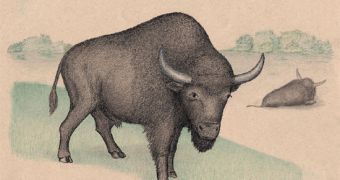Some 13 millennia ago, what is now the territory of North America was occupied by the Clovis culture, the oldest identifiable culture in the region. The civilization lasted between 200 and 800 years, depending on the source providing the information, but consensus places its life span at somewhere around 500 years. Artifacts belonging to these large animal-hunters were found at several locations across the continent, but now the southernmost evidence of the Clovis people has been unearthed in Mexico, Nature News reports.
The new find, featuring the most extensive evidence of the civilization, has been made in the northwestern Mexico state of Sonora, the team that has made it announces. Inside the bed of artifacts, diggers have also discovered the bones of a gomphothere, which is a now-extinct cousin of the mastodon. The Clovis were especially good at hunting large mammals such as these ones, ancient bison, and mammoths, which still roamed the land at the end of the last Ice Age. The remains bore the distinctive spearhead wounds left behind by Clovis arrows.
Over the past ten years, more than 25 discoveries of Clovis artifacts have been made in Mexico. In spite of this fact, researchers still have no clue what the civilization's activities in the region were. The highest concentration of artifacts was found in the San Pedro River basin, near what is now the border between Mexico and the United States. The new find was made some 100 kilometers Northwest of the isolated ranch land Hermosillo, by a team of experts led by University of Arizona in Tucson (UAT) scientist Vance Holliday and Guadalupe Sanchez-Miranda, with the National Institute of Anthropology and History in Mexico City. The site is called El Fin del Mundo.
The analysis of the bone bed has revealed that the bones, scrapers, blades, and other tools found at the location are about 13,000 years old, and that the site was at some point very close to a stream. This would make sense, experts argue. After the animal was killed, it was brought near the water, in order to be skinned and for its meat to be removed. After everything that was of use was removed, the carcass along with the tools were abandoned, and the Clovis people moved on.

 14 DAY TRIAL //
14 DAY TRIAL //